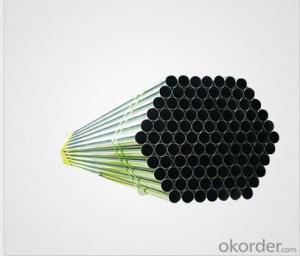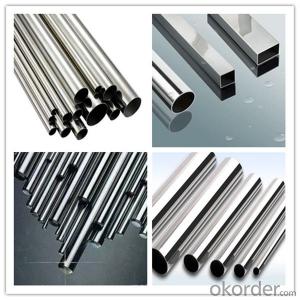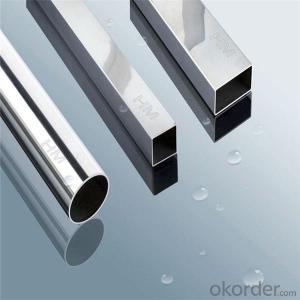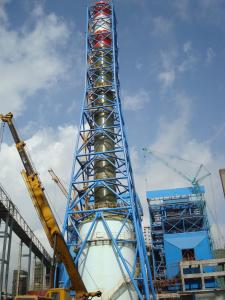Stainless Steel Chimney Pipe
Stainless Steel Chimney Pipe Related Searches
Best Paint For Stainless Steel Blanket Insulation For Steel Buildings Primer For Galvanized Steel Foam Filter For Stainless Steel H S Code For Stainless Steel Surface Grinding Wheels For Stainless Steel Surface Grinding Wheels For Hardened Steel Hole Saw For Stainless Steel Paint For Stainless Steel Stainless Steel For BbqHot Searches
Steel Mesh Panels For Sale Price For Stainless Steel Scrap Scrap Price For Stainless Steel Price For Stainless Steel Stainless Steel Tank For Sale Stainless Steel Sheets For Sale Cheap High Tea Sets For Sale Stainless Steel Tanks For Sale Stainless Steel For Sale High Density Fiberboard For Sale Solar Hot Water Collectors For Sale Scaffolding For Sale In Uae Scaffolding For Sale In Ireland Scaffolding For Sale In Houston Type Of Inverter For Solar Price Of Shipping Containers For Sale Types Of Inverter For Solar Stock Price For Aluminum Used Solar Inverter For Sale Steel Mesh Panels For SaleStainless Steel Chimney Pipe Supplier & Manufacturer from China
Okorder.com is a professional Stainless Steel Chimney Pipe supplier & manufacturer, offers integrated one-stop services including real-time quoting and online cargo tracking. We are funded by CNBM Group, a Fortune 500 enterprise and the largest Stainless Steel Chimney Pipe firm in China.Hot Products
FAQ
- To prevent pressure loss in stainless steel pipes, one can take several important steps: 1. Ensure proper pipe sizing: It is crucial to choose the appropriate diameter for the stainless steel pipe based on the system's flow rate and pressure requirements. Using pipes that are too small can result in increased pressure loss due to higher fluid velocities. 2. Reduce pipe length and bends: It is advisable to keep the stainless steel pipe as short as possible and minimize the number of bends or elbows. Lengthy pipes and multiple bends introduce friction and turbulence, which lead to pressure loss. 3. Opt for a smooth interior surface: Select stainless steel pipes with a smooth interior surface finish. This helps minimize pressure loss by reducing frictional resistance and turbulence. 4. Minimize unnecessary fittings and valves: Each fitting or valve in a stainless steel pipe system adds additional pressure loss. To maintain pressure, it is best to minimize the use of unnecessary fittings and valves, selecting those with low resistance instead. 5. Ensure proper installation: Correctly installing stainless steel pipes with proper alignment and support is crucial. Misaligned or poorly supported pipes can cause excessive stress and potential deformation, resulting in pressure loss. 6. Regular maintenance and cleaning: Periodically inspect and clean the stainless steel pipes to remove any accumulated scale, debris, or deposits. These obstructions can restrict flow and lead to pressure loss. 7. Consider flow control devices: Depending on the application, incorporating flow control devices such as flow restrictors, pressure regulators, or flow meters can help maintain optimal pressure levels in the stainless steel pipe system. By implementing these measures, one can minimize pressure loss in stainless steel pipes, ensuring efficient and effective fluid transportation within the system.
- Stainless steel pipes can be described using Schedule and Nominal Pipe Sizes, but they have different focuses. Schedule denotes the pipe's wall thickness and is represented by a number. It is a standardized system used to classify pipes based on their wall thickness. The schedule number indicates how thick the pipe is in relation to its diameter. For instance, a Schedule 40 pipe has a thicker wall than a Schedule 10 pipe of the same diameter. The higher the schedule number, the thicker the wall. On the contrary, Nominal Pipe Size (NPS) represents the approximate inner diameter of the pipe and is expressed in inches. NPS is a size designation that doesn't directly correspond to the actual dimensions of the pipe. It serves as a convenient reference for identifying pipes and is often used in conjunction with the schedule number to specify a specific pipe. In summary, the main distinction between Schedule and Nominal Pipe Sizes for stainless steel pipes lies in what they describe. Schedule indicates the wall thickness, whereas Nominal Pipe Size refers to the approximate inner diameter of the pipe. Both factors are crucial when selecting the appropriate stainless steel pipe for a particular application.
- Yes, stainless steel pipes are fire-resistant. Due to their high melting point and excellent heat resistance, stainless steel pipes can withstand extreme temperatures and prevent the spread of fire, making them a reliable choice for fire protection systems.
- Indeed, Teflon can be utilized to insulate stainless steel pipes. Teflon, or polytetrafluoroethylene (PTFE) as it is also referred to, is a highly adaptable substance that is frequently employed due to its nonstick properties and its ability to withstand high temperatures and chemicals. It is an exceptional option for insulating stainless steel pipes since it provides thermal insulation, guards against corrosion, and prevents heat loss or gain. Furthermore, Teflon insulation minimizes condensation or moisture accumulation on the pipe's surface. Moreover, Teflon's low friction coefficient enables smooth fluid flow through the pipes, rendering it appropriate for a wide range of applications in industries like food processing, pharmaceuticals, and chemicals.
- Stainless steel pipes are indeed suitable for wastewater treatment. This material, known for its resistance to corrosion, brings numerous advantages to applications in wastewater treatment. It is highly durable and can withstand exposure to aggressive chemicals and abrasive substances typically found in wastewater. Moreover, stainless steel pipes do not rust, ensuring a longer lifespan and minimizing the chances of pipe failure. In addition, stainless steel is inert and non-reactive, making it ideal for transporting and containing various types of wastewater without any risk of contamination. The smooth surface of stainless steel pipes also prevents the accumulation of deposits and biofilm, reducing the likelihood of clogging and allowing for the efficient flow of wastewater. All in all, stainless steel pipes present a dependable and sustainable choice for wastewater treatment systems.
- The typical wall thickness for stainless steel pipes can vary depending on the specific application and requirements. However, common ranges for stainless steel pipe wall thicknesses are typically between 0.065 inches to 0.500 inches.
- The composition and intended use are what differentiate 409 and 316 stainless steel pipes. 409 stainless steel is categorized as ferritic stainless steel, containing more chromium but less nickel than 316 stainless steel. This means that 409 stainless steel is less resistant to corrosion and oxidation. However, it is still suitable for applications that require moderate levels of corrosion resistance, such as automotive exhaust systems and heat exchangers. On the contrary, 316 stainless steel is classified as austenitic stainless steel, with higher amounts of both chromium and nickel. Because of its composition, it provides excellent corrosion resistance, even in demanding environments. Therefore, it is commonly used in applications where superior resistance to corrosion is necessary, such as marine environments, chemical processing plants, and medical equipment. To summarize, the main distinctions between 409 and 316 stainless steel pipes are their composition and corrosion resistance. 409 stainless steel is appropriate for applications with moderate levels of corrosion resistance, while 316 stainless steel is the preferred choice for applications that demand superior corrosion resistance in harsh environments.
- There are several effective methods to prevent noise transmission in stainless steel pipes. 1. Insulation: One of the most common and effective ways to prevent noise transmission is by insulating the stainless steel pipes. Insulation materials such as mineral wool, fiberglass, or foam can be wrapped around the pipe to absorb and dampen sound waves. This helps to reduce the noise transmitted through the pipes. 2. Vibration isolation: Noise transmission can also be reduced by using vibration isolation techniques. This involves installing flexible connectors or rubber mounts between the pipe and its supports. These isolators absorb vibrations and prevent them from being transmitted as noise through the pipe. 3. Anti-vibration pads: Another method to prevent noise transmission is by using anti-vibration pads. These pads are placed under the pipe supports to absorb vibrations and prevent them from being transmitted as noise. They act as a barrier between the pipe and its support, reducing noise transmission significantly. 4. Acoustic lagging: Acoustic lagging is a technique that involves applying a noise-reducing material directly onto the surface of the stainless steel pipes. This material, often made of mass-loaded vinyl or rubber, acts as a barrier to block the transmission of sound waves. It effectively reduces noise transmission and can be used in combination with insulation for even better results. 5. Proper pipe routing: Noise transmission can be minimized by ensuring proper pipe routing. Pipes should be installed in a way that minimizes the amount of contact or proximity to other structures or surfaces that can amplify noise. Additionally, avoiding sharp bends or angles in the pipe can help reduce noise transmission. It is important to note that the choice of method may vary depending on the specific noise issue and environment. A professional acoustic consultant or engineer can provide guidance on the most suitable solution for a particular situation.















































